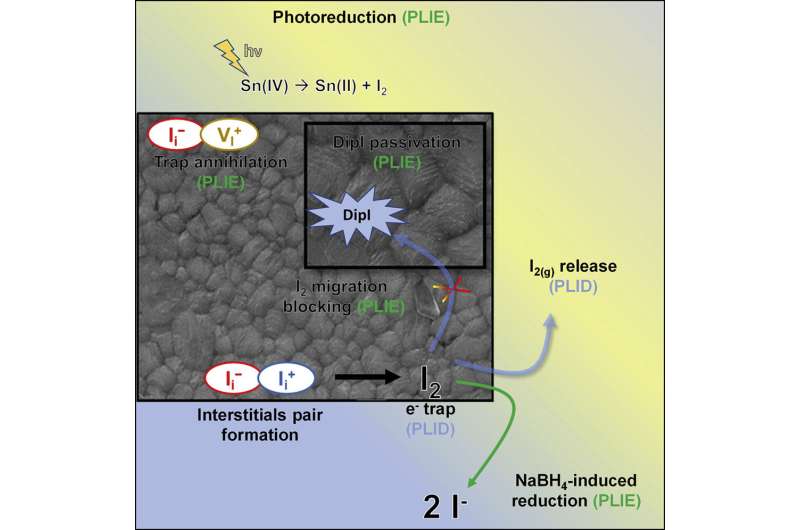Improved tin perovskite solar cells achieve more than 1,300 hours of operational stability

A research team led by Professor Iván Mora Seró from the Institute of Advanced Materials (INAM) of the Universitat Jaume I of Castelló has managed to improve the efficiency and durability of tin perovskite solar cells. Specifically, they have exceeded 1,300 hours of operational stability, the highest known to date, thanks to the incorporation of additives in the preparation of the devices. The study was published this week in the sustainable energy journal Joule.
Tin-based halide perovskites have emerged as promising candidates to alleviate the toxicity problems associated with lead-based perovskites, whose toxicity is a handicap for their exploitation for technological purposes. Derivatives of other elements such as antimony, bismuth, copper, germanium or tin, which are less toxic, are currently being explored. In the case of tin, an efficiency of more than 14% has been achieved so far, but it has serious stability problems.
This work has introduced, for the first time, a combination of dipropylammonium iodide and sodium borohydride, two additives that have made it possible to prepare devices with photoconversion efficiencies (PCE) of more than 10%, which stand out for their greater stability and which have maintained 96% of the initial PCE after 1,300 hours under solar illumination in a nitrogen atmosphere. To the best of the authors' knowledge, this is the highest value known for solar cells based on tin perovskite. "We have found that the control of halide chemistry is a key aspect in delineating the performance of tin-based perovskite solar cells and optoelectronic devices," says researcher Iván Mora Seró.
Although the stability of halide perovskite semiconductors and devices under operating conditions is still far from being competitive with silicon technologies (currently the most widely used in photovoltaics), "outcomes provide valuable information and indicate the direction that research should take to achieve more efficient additives that control halide chemistry and their entry into the photovoltaic technology market," explains Iván Mora Seró, the researcher responsible for the study together with Dr. Rafael S. Sánchez.
More information: Jesús Sanchez-Diaz et al, Tin perovskite solar cells with >1,300 h of operational stability in N2 through a synergistic chemical engineering approach, Joule (2022). DOI: 10.1016/j.joule.2022.02.014




















